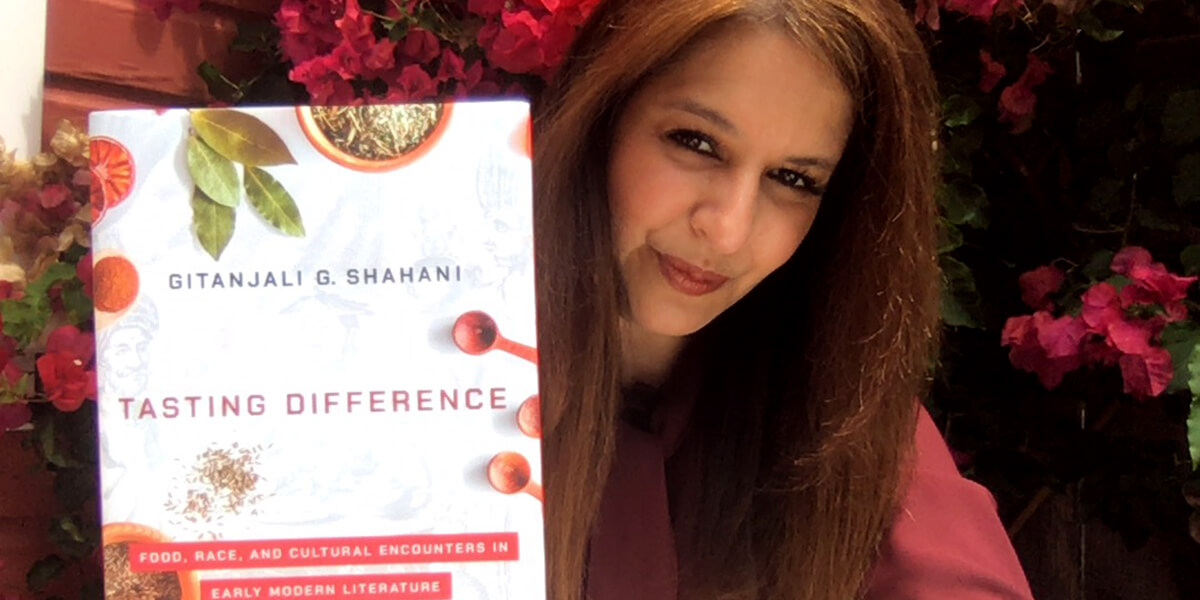
When the witches in “Macbeth” call for the “fire burn and cauldron bubble,” they don’t just use a ghastly recipe to cast a spell. They invoke ethnic tropes — a historic literary reference to race — according to Professor Gitanjali G. Shahani’s new book, “Tasting Difference: Food, Race and Cultural Encounters in Early Modern Literature” (Cornell University Press).
The witches’ spell in William Shakespeare’s 17th-century “Macbeth,” still recited at Halloween school parties worldwide, calls for discriminating ingredients: the liver of a “blaspheming Jew,” nose of a Turk and lips of a Tartar. It’s a recipe that labels people of certain groups as outsiders.
“In addition to things like burnt snails and the chopped-up ears of a cat, one recipe calls for pounded skulls, preferably those found in the graves of Ireland,” added Shahani, chair of the English Language and Literature Department. “Some of these recipes are disturbing in the way they describe draining corpses of black and brown bodies for mummy, which was believed to have curative and cosmetic properties, and was consequently imported in large quantities via Egypt.”
International exchange of food developed in the early modern period of 1500 – 1800. Taste buds expanded and new cuisines were created, but cultural differences were otherwise often not accepted. Early modern literature is stocked with references to food and medicine made from urine, dog tongues and unicorn horns. “It’s not the kind of stuff you get at Trader Joe’s!” Shahani said.
In researching “Tasting Difference,” Shahani studied plays, pageants, domestic manuals, cookbooks, ballads, travelogues and more. She discovered that early modern food writing evokes feelings of danger and allure. In “A Midsummer Night’s Dream,” a character mentions a “spicèd Indian air by night.”
“Long before the average English household encountered ‘an Indian,’ it encountered nutmeg and pepper in pies and potions,” said Shahani, a Shakespeare scholar who studies connections between food and literature. “It is in the writing about these tastes, in the culinary realm that I saw an early conception of racial, cultural and religious difference being articulated.”
A 17th-century broadside sheet depicts coffee as a dark figure from Shakespeare’s “Othello.” Contemporary food brands continue to perpetuate racial tropes with the title character, a dark-complexion Moor from Africa. Her SF State students introduced her to “Othello” chocolates, cookies and lattes made in the Bay Area.
“When I was teaching ‘Othello,’ it was my students who kept pointing to the ways in which so many characters describe wanting to consume or devour all that is exotic about him,” Shahani said.
Examining literary descriptions of food can help people can become more informed about today’s societal issues, including immigration, Shahani says.
“Is it the immigrant we seek to keep out, while welcoming their culinary offerings?” Shahani asks. It’s something to think about when eating or reading (or both), as the calendar moves from Halloween toward Thanksgiving. “Food frequently becomes the means of rendering difference more palatable.”
— Matt Itelson